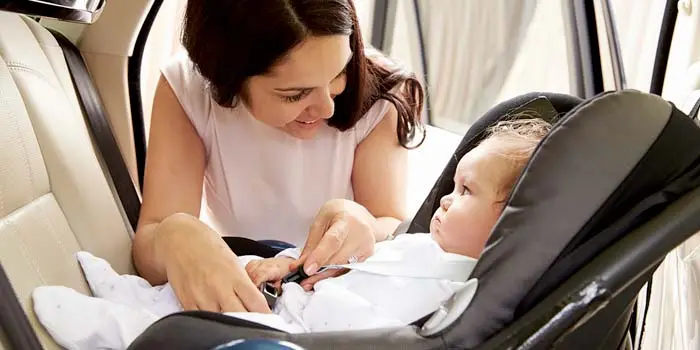Car Seat Safety for Every Age


As a parent, the safety of your child is always your top priority. It’s especially important when you're traveling by car. According to the Centers for Disease Control and Prevention (CDC), an estimated 46% of car seats and booster seats are misused in a way that could reduce their effectiveness. Being knowledgeable about car seat safety guidelines is important at every stage from infancy to pre-teen years. Our guide to car seat education can help you navigate child car seat safety at every stage, but be sure to discuss recommendations with your child’s medical provider.
There are multiple car seat options for each stage of your child’s growth, but we offer helpful tips that can be generally applied to all car seats at all stages.
Before you purchase a car seat, it’s helpful to understand the stages and transitions that will happen starting when your child is a newborn until they are a pre-teen. There are “all-in-one” car seats that will accommodate all stages, and there are options that are fitting for only one or a few stages. Budget, car seat fit and the number of cars your child will be riding in are all considerations worth weighing. Below are useful tips that will help you decide which options best fit your needs.
An infant car seat is specifically designed for newborns and small babies before they reach certain weight requirements. This type of car seat is rear-facing only and provides a portable option to carry your little one.
What you should consider:
Infant Car Seat Safety Tip: This type of car seat will come with newborn inserts to make the child more secure. Make sure you're using these manufacturer inserts until the specified weight is reached.
Convertible car seats are designed to grow with your child — from newborn to youth. These types of car seats can transition from rear-facing to forward-facing and then to a high-back booster. Some convertible car seats will also transition into a backless booster. Convertible car seats are generally not portable and stay stationary in the vehicle.
What you should consider:
Convertible Car Seat Safety Tip: You'll want to pay close attention to the specifications of your seat. There are certain weight and height requirements for each formation of the car seat, and you should only graduate your child to each phase if those specifications are met and you’ve consulted your child’s medical provider.
Booster seats are designed for children who have graduated from the front-facing car seat. These car seats use the vehicle’s seatbelt instead of harness straps and the booster raises the child so that your vehicle’s seatbelt fits their height properly. This is generally the final car seat your child will have before they graduate to a seat with a seatbelt only.
What you should consider:
Booster Seat Safety Tips: Be mindful of the seatbelt positioning. The waist belt should be over the child's upper thighs, not their stomach, and the shoulder belt should be across the center of the shoulder/chest, not their neck.
Now that your child is getting older, they may tend to fidget in their seat. Don't let your child alter the fit of the seatbelt (for example, do not let them put the shoulder belt behind their back).
Take a picture for the baby book, another milestone for your child! When the seatbelt in your car fits your child properly without a booster seat, they are ready to ride in the car without a car seat. However, there are still very important safety precautions to follow. Because airbags can be deadly for children, it's recommended those who are age 12 or younger should be seated in the backseat of the car.
As a parent, the best thing you can do to keep your child safe is to arm yourself with knowledge! Ensuring that your child is in the proper car seat for each stage will also contribute to overall safety on the road for you and your family and leads to less distracted driving. And before you know it, you will be in the passenger seat teaching your child about safe driving as a teen!
As you stay up to date on car seat safety, we can help ensure your car is protected. Contact a Farm Bureau agent today to discuss what kind of coverage may fit your needs!